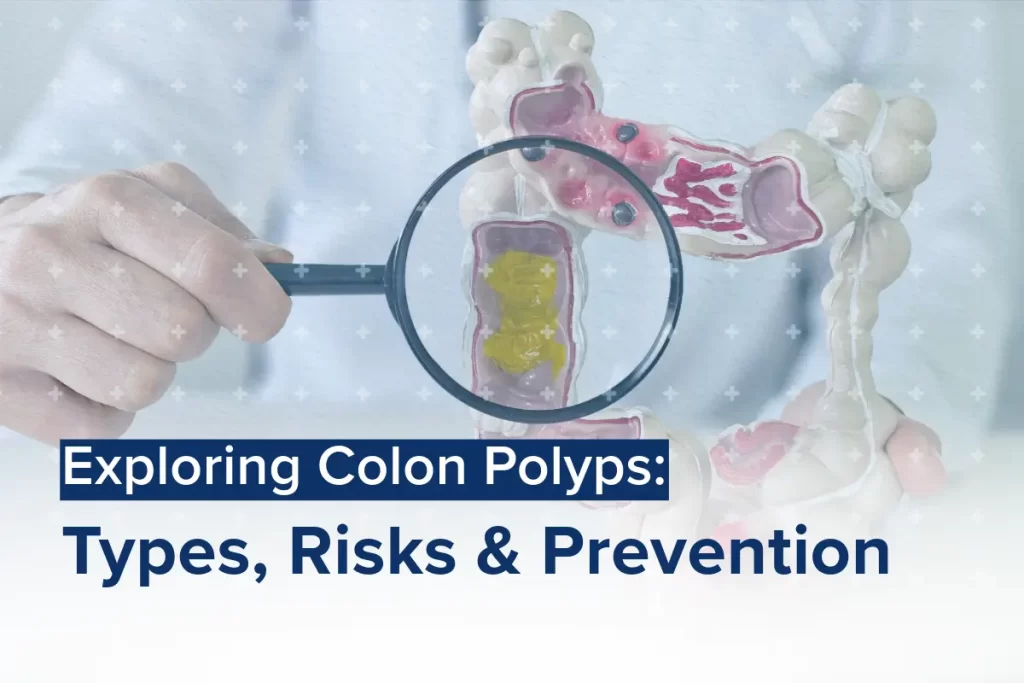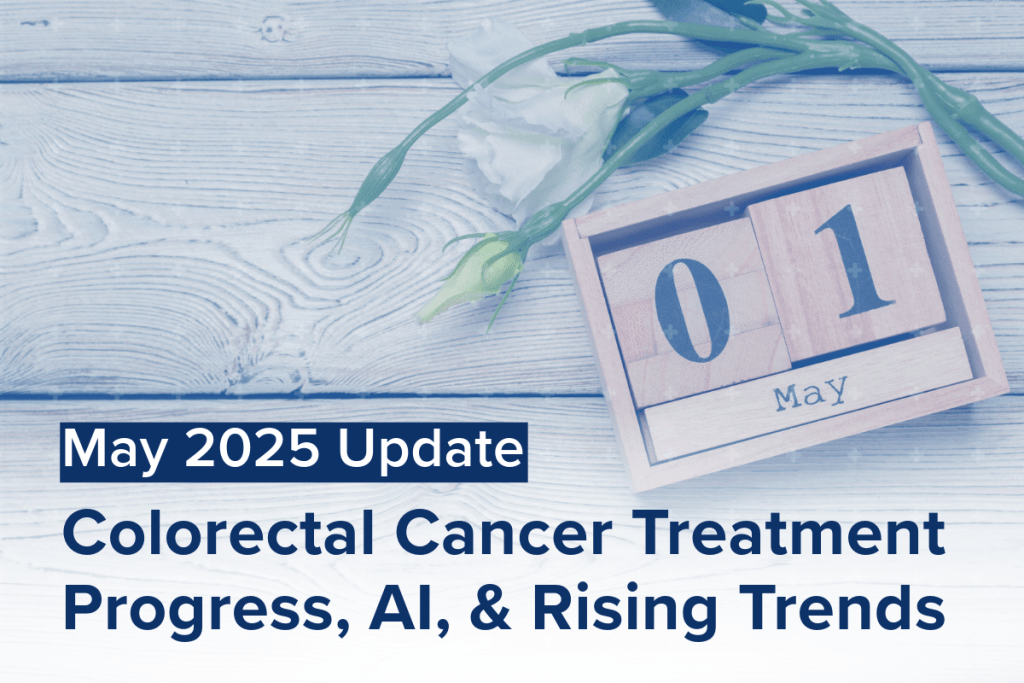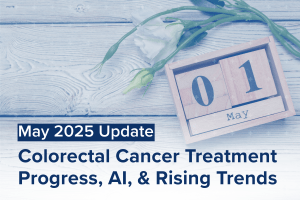Colon polyps don’t come up often but they can have a big impact on your health. These growths show up in adults during routine screenings and come in all shapes and sizes and risks. While many are benign, some can become serious if left untreated – including colorectal cancer.
Understanding colon polyps – what they are, how they form and why early detection matters gives you control of your health.
What Are Colon Polyps?
Colon polyps are abnormal growths that occur in the colon or rectum. Age, genetics, diet and lifestyle can disrupt normal cell turnover and cause them to form.
Most polyps are asymptomatic so routine screenings are key to early detection. When symptoms do occur they may include:
- Rectal bleeding may indicate the presence of polyps in the lining of the colon.
- Changes in stool patterns
- Abdominal discomfort
Not all polyps are bad but some are precancerous and need to be removed. Knowing the types of colorectal polyps may give you clarity on what they mean.
Types of Colon Polyps
Adenomatous Polyps (Adenomas)
Adenomas are the most common type of colon polyp and have the highest risk of becoming cancer. They are classified by growth pattern:
- Tubular Adenomas: The most common subtype, generally low risk of malignancy.
- Villous Adenomas: Less common but more likely to become cancerous due to their structure.
- Tubulovillous Adenomas: A combination of tubular and villous features with intermediate risk of cancer.
Adenomas also come in different shapes:
- Pedunculated Adenomas: Have a stalk, like a mushroom, and are easier to remove.
- Sessile Adenomas: Flat and broad-based, harder to detect.
Serrated Polyps
Serrated polyps have a saw-tooth appearance under the microscope:
- Sessile Serrated Polyps (SSPs): Found in the proximal colon and moderate risk of cancer if left untreated.
- Traditional Serrated Adenomas (TSAs): Rare but higher risk of malignancy, need to be monitored closely.
Non-Neoplastic Polyps
These polyps are generally benign with little to no cancer risk:
- Hyperplastic Polyps: Common in the distal colon and usually harmless.
- Juvenile Polyps: Seen in children, these benign growths are usually no risk unless associated with genetic conditions.
- Inflammatory Pseudopolyps: Associated with inflammatory bowel disease (IBD), these are caused by chronic inflammation and scarring.
Higher Risk Factors and Causes of Colon Polyps
Several things increase your risk of colon polyps:
- Age: Risk increases after 45.
- Family History: A family history of colorectal cancer or polyps increases the risk of developing colon polyps.
- Lifestyle: Smoking, excessive alcohol consumption, obesity and diets high in red or processed meat can cause polyps.
- Chronic Conditions: Crohn’s disease or ulcerative colitis increases your risk of polyps.
Modifying your risk factors, diet and exercise and following colonoscopy age guidelines can reduce colon health complications.
How Are Colon Polyps Detected and Treated?
Detection
A colonoscopy is the best way to detect colon polyps. This procedure allows doctors to see the colon and remove polyps at the same time.
Other screening tests like stool-based tests or CT colonography can suggest polyps are present. But these tests are not as accurate as a colonoscopy and often require follow-up testing.
Treatment
Polyps found during a colonoscopy are usually removed via polypectomy. This minimally invasive procedure uses special tools to remove the polyp and then send it to the lab to determine the type and cancer risk. For larger or complex polyps, advanced techniques like endoscopic mucosal resection (EMR) may be needed to remove it completely.
How to Prevent Colon Polyps
Not all polyps are preventable but you can lower your risk:
- Eat a High-Fiber Diet: Add more fruits, vegetables and whole grains.
- Stay Active: Exercise promotes digestive health and weight management.
- Avoid Smoking and Limit Alcohol: These habits increase cancer risk.
- Screen Regularly: Start screening at 45 or earlier if you have a family history of colorectal cancer.
Combining these lifestyle changes with regular screening reduces polyp formation.
The Value of Early Detection
The characteristics of colon polyps (size, type, villous features) determine the risk of developing colon cancer. Follow-up colonoscopies are based on the findings of the initial screening. Most colorectal cancers come from polyps so early detection and removal can prevent almost all of them. Regular colonoscopies are key to keeping your colon healthy and reducing cancer risk.
Screening Made Affordable
Affordable access to colonoscopies is key to prevention and peace of mind. Organizations like the American Cancer Society promote awareness about colorectal cancer screening. ColonoscopyAssist offer high quality, cost effective screening services to detect and manage polyps early. Don’t wait—schedule your colonoscopy today.
Bottom Line
Colon polyps are common but they don’t have to become serious. By knowing the types, risks and importance of screening you can take control of your health. Early detection The removal of polyps through colonoscopy is key to preventing colorectal cancer, especially large polyps. If you’re 45 or older or have risk factors schedule your screening. Prevention is the key to long term wellness.
FAQ
1. How often are polyps found during a colonoscopy?
Polyps are found in approximately 25-30% of colonoscopies in adults, with the rate being higher for individuals over 50 years of age or those with risk factors such as a family history of colorectal cancer. Most of these polyps are benign, but some may have the potential to develop into cancer over time.
2. Is it possible to test for colon polyps at home?
Yes, there are at-home screening tests, such as fecal immunochemical tests (FIT) or stool DNA tests (e.g., Cologuard), that can detect signs of colon polyps or cancer by identifying blood or abnormal DNA in stool samples. However, these tests cannot definitively diagnose polyps and may require a follow-up colonoscopy for confirmation and removal.
3. How often do bowel polyps turn cancerous?
The majority of bowel polyps are non-cancerous (benign), but some types, particularly adenomatous polyps (adenomas) and certain larger polyps, have a higher risk of becoming cancerous. It is estimated that only about 5-10% of adenomas progress to cancer over 10-15 years. Regular screenings and removal of polyps significantly reduce this risk.
4. Colonoscopies don’t always detect colon cancer. Is this true?
While colonoscopies are the gold standard for detecting colon polyps and cancer, they are not 100% accurate. Research suggests that they may miss up to 5-10% of polyps, especially smaller or flat ones, due to factors like incomplete bowel preparation or operator technique. Despite this, colonoscopies remain the most reliable screening tool available.
5. What are the symptoms of colon polyps?
Most colon polyps are asymptomatic, meaning they don’t cause noticeable symptoms. However, in some cases, they may cause:
- Rectal bleeding
- Changes in bowel habits, such as diarrhea or constipation lasting longer than a week
- Abdominal pain or cramping
- Iron-deficiency anemia, leading to fatigue and weakness
If you experience these symptoms, consult a healthcare provider for evaluation.


















